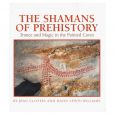By the 1975 publication of Realms of the Human Unconscious, Stanislav Grof was prepared to assert the existence of “a vastly extended cartography of the human psyche” including two new realms whose non-existence were central to the (even now) prevailing scientific worldview: the perinatal––relating to the experience of embryogenesis and birth––and the transpersonal––relating to experiences of the synchronistic, telepathic, karmic, or otherwise out-of-body variety. [ read more ]
A mere twenty-seven years in the future, forbidden pharmaceuticals fused with novel nanotechnology may present the post-human possibility of telepathic transcendence. But at what price? [ read more ]
Overall this was a fairly interesting but extremely unpolished piece of writing. The numerous journeys on DMT that Turner relates often expand into philosophical reflections. The book is a revision of and expansion on a series of accounts previously posted to an Internet message board. It’s an idiosyncratic and unique account, with the author’s writing style and observations consistently veering back and forth from the awkward to the insightful. I did appreciate that Turner does not proselytize, and I found his honesty to be endearing. [ read more ]
Razam does a great job detailing the myriad cast of characters involved in the ayahuasca tourism phenomenon in Peru: from native to gringo shamans, ayahuasqueros to tabaqueros to perfumeros, spiritual to hedonistic “seekers”, and everyone in between. [ read more ]
Two prominent researchers argue that many European caves are linked to shamanic ritual practice and initiation. At 120 pages, this book is essentially a long essay laying the basis for the authors’ shamanic hypothesis and attempting to ground it in biological terms. While I found their central thesis to be underdeveloped, the authors do an admirable job of surveying the available evidence, providing a valuable analysis of the known art. The book is lavishly illustrated, though the pictures are rarely captioned with date information. [ read more ]
Seven’s descriptions of the effects of using mind machines while on assorted psychoactives are unique to the psychedelic literature. These alone make the book worth reading. Over the course of his tale, Seven reveals himself to be a likeable character—flawed, as we all are, but inspiring in his honest exuberance. [ read more ]
As a bright young suburban kid, Norberg held a typical anti-drug attitude until his early teenage years, when his eldest brother Dave admitted to smoking pot and dropping acid. Initially shocked, Sheldon soon starts experimenting. [...] Although he goes to college, he’s more interested in partying and dealing drugs than attending classes, and he sees himself as a kind of psychedelic guru for those around him. [ read more ]
Long before the Shulgins’ alphabetamine love stories appeared on bookstore shelves, Marcia Moore and Howard Alltounian gave us Journeys Into the Bright World, a drug travelogue focused on the transpersonal effects of ketamine. [ read more ]
[...] author David David Katzman has taken the plunge and produced an exuberantly psychedelic narrative. [ read more ]
...this reads as a wonder tale, a once-upon-a-time narrative, deeply personal, effervescent tale of the adventures of an enthusiast in a psilocybinetic state of mind. The narrative voice avoids the inflation one sometimes hears in ‘the tale that must be told;’ the story is delivered with a pocketful of wry at every turn. [ read more ]











